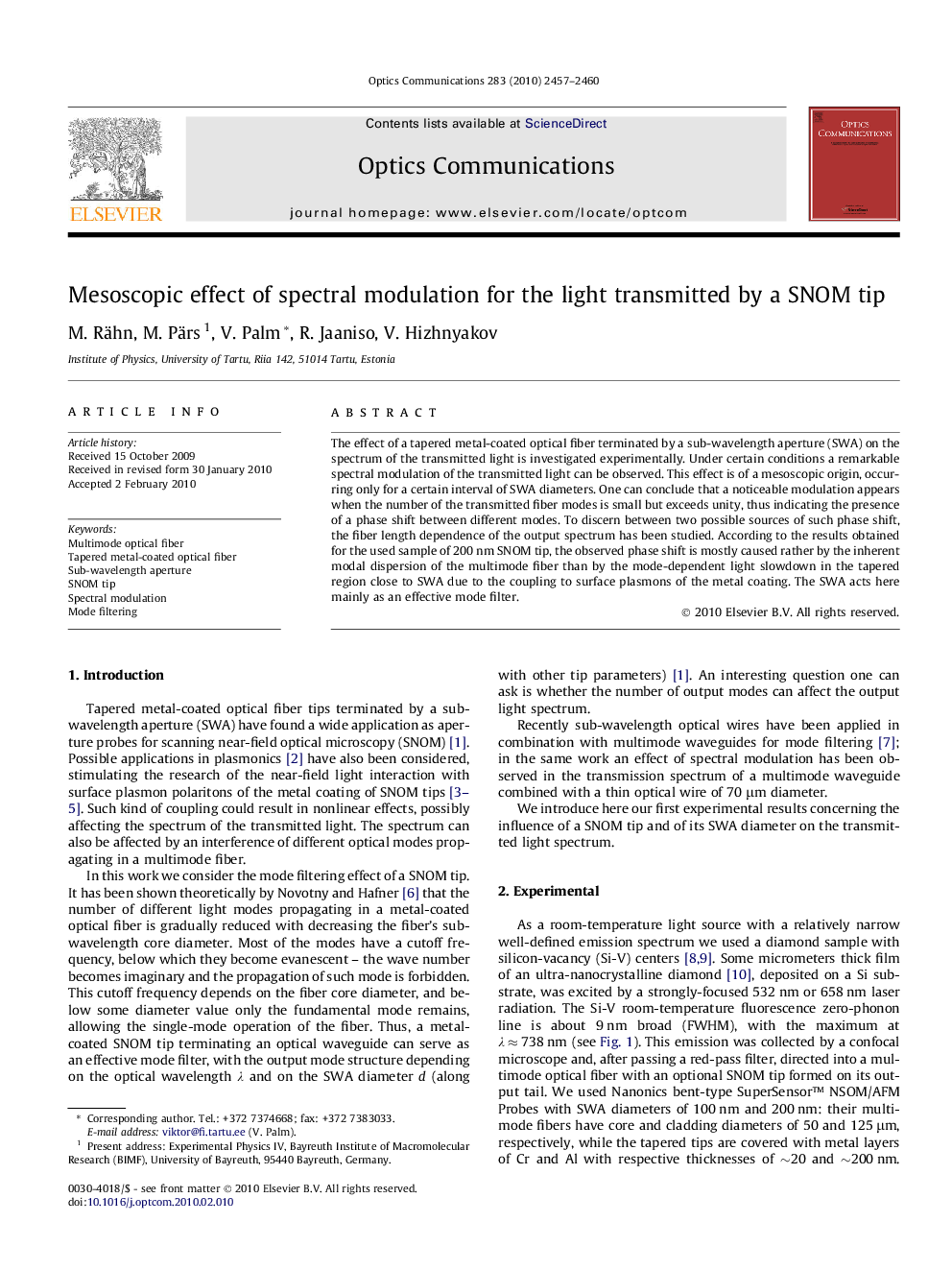| Article ID | Journal | Published Year | Pages | File Type |
|---|---|---|---|---|
| 1538241 | Optics Communications | 2010 | 4 Pages |
The effect of a tapered metal-coated optical fiber terminated by a sub-wavelength aperture (SWA) on the spectrum of the transmitted light is investigated experimentally. Under certain conditions a remarkable spectral modulation of the transmitted light can be observed. This effect is of a mesoscopic origin, occurring only for a certain interval of SWA diameters. One can conclude that a noticeable modulation appears when the number of the transmitted fiber modes is small but exceeds unity, thus indicating the presence of a phase shift between different modes. To discern between two possible sources of such phase shift, the fiber length dependence of the output spectrum has been studied. According to the results obtained for the used sample of 200 nm SNOM tip, the observed phase shift is mostly caused rather by the inherent modal dispersion of the multimode fiber than by the mode-dependent light slowdown in the tapered region close to SWA due to the coupling to surface plasmons of the metal coating. The SWA acts here mainly as an effective mode filter.
